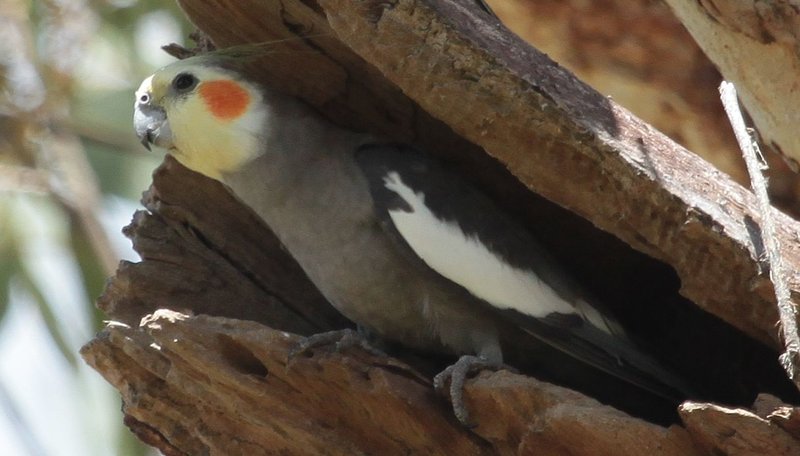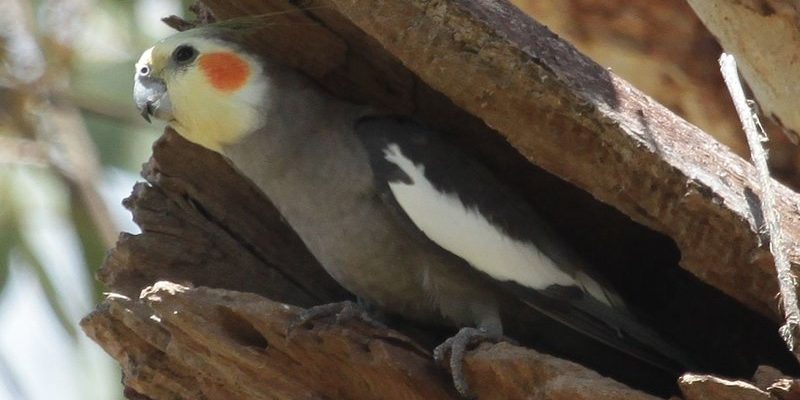
Understanding how cockatiels breed and care for their young can deepen your appreciation for these charming companions. So, let’s dive into their nesting behaviors and the fascinating journey they embark on from eggs to fledglings. You might be surprised at what you learn about these delightful birds!
What Are Cockatiels’ Nesting Habits?
Cockatiels are known for being affectionate and social birds, but when it comes to nesting, they become quite serious. Typically, these birds prefer to nest in hollow trees, cliffs, or even man-made structures. In a domestic setting, you might provide a nesting box filled with soft materials like paper or grass. This helps mimic the natural conditions they’d seek out in the wild.
You might be wondering what materials they use to build their nests. Here’s a quick list:
- Softwood shavings
- Paper towels
- Hay or dried grass
- Feathers
When cockatiels start nesting, they will often choose a partner and spend a lot of time together. They’ll engage in playful behaviors, like grooming and preening each other, which strengthens their bond. This is a lovely stage of their lifecycle, where they show affection and teamwork.
How Do Cockatiels Prepare for Breeding?
Before they breed, cockatiels go through a pre-breeding stage, where the female will often exhibit certain behaviors that indicate she is ready to mate. For instance, you might notice her becoming more vocal, puffing up her feathers, or even showing a change in her posture. These signs are all cues to the male, indicating it’s time to step up his game.
During this time, you can help by providing a comfortable environment. A quiet, secure space with minimal disturbances will make your cockatiels feel safe and more inclined to breed. Keeping their cage clean and ensuring they have a nutritious diet will support their health during this vital period. A balanced diet of seeds, fresh fruits, and vegetables is essential for both parents-to-be.
Once you notice these behaviors, it’s usually just a matter of days before they mate. The mating process can be quite quick, with male cockatiels performing elaborate displays to woo their partners. You might even catch them dancing and showing off their colors!
The Egg-Laying Process
After mating, the female cockatiel will lay her eggs. Usually, she’ll lay between 3 to 7 eggs, spaced a day or two apart. Cockatiels often choose to lay eggs early in the morning, so keep an eye out if you suspect your bird is ready to breed.
The eggs are usually a soft white color and about the size of a small grape. During this time, the female will focus on staying in the nest, sitting on her eggs to keep them warm and safe. It’s an essential part of her lifecycle, as she prepares to bring new life into the world.
Here’s what happens during this period:
- The female will rarely leave the nest to eat or drink, so make sure food and water are easily accessible.
- She’ll rotate the eggs to ensure they are evenly heated.
- The male will often bring her food, showing his support and care.
It’s crucial to keep the area around the nesting box quiet and undisturbed. Too much noise or stress can lead to egg abandonment.
Incubation: The Waiting Game
Once all the eggs are laid, the incubation period begins. This usually lasts about 18 to 21 days. During this time, the female is dedicated to keeping her eggs warm, which is essential for proper development. If you’re observing this process, it’s a beautiful sight—watching her gently turning the eggs and occasionally rolling them under her body.
You might be curious about what happens inside the eggs. As they incubate, the developing embryos grow and form into baby cockatiels. Surprisingly, you can sometimes hear tiny peeping sounds from the eggs as the chicks get closer to hatching!
It’s important to maintain a stable temperature and humidity level in their environment. Cockatiels are sensitive creatures, and a change in conditions can affect hatching rates. So, if you’re keeping cockatiels at home, create the most nurturing environment possible.
The Hatching Process
Hatching is one of the most exciting moments in the cockatiel lifecycle! Each egg will hatch individually, usually one at a time, over a few days. When the chicks finally break free from their shells, they’re blind, naked, and entirely dependent on their parents for survival.
The mom will continue to take excellent care of the hatchlings, covering them with her body to keep them warm. You’ll likely see both parents involved in feeding, with the male bringing food to the female, who will then regurgitate it for the babies. This feeding process is fascinating and crucial for their early development.
Here’s what to expect during the first few weeks:
- Newly hatched chicks need constant care. The parents will keep them warm and well-fed.
- As the chicks grow, they’ll start to develop feathers and open their eyes.
- Within a few weeks, they will become more active, moving around the nesting box, chirping, and demanding food from their parents.
Watching this stage is nothing short of magical. You’ll witness the transformation from helpless chicks to lively young cockatiels.
Fledging and Independence
After about 5 to 6 weeks, the baby cockatiels will reach a stage known as fledging. This means they’re starting to grow feathers and are ready to leave the nest. You might see them flapping their tiny wings and practicing their flight skills. It’s a crucial moment that sets them on the path to independence.
At this point, they may venture out of the nest for short periods. It’s exciting to watch them explore their surroundings! However, the parents will still be very involved, teaching them how to find food and stay safe. It’s a lovely time of bonding for the family.
Here are some things to consider as the chicks become independent:
- Ensure their environment is safe, as they may not be aware of dangers just yet.
- Provide plenty of toys and perches to encourage their development.
- Monitor their diet closely; they’ll need a mix of seeds, fruits, and vegetables to grow strong.
As they grow, you can also start to observe their unique personalities. Some might be more adventurous, while others will be a bit shyer.
In summary, the nesting habits and lifecycle of cockatiels are quite fascinating. From their initial mating rituals to the joys of hatching and raising chicks, these birds display a range of behaviors that are both nurturing and instinctual. Whether you’re a current bird owner or simply someone who appreciates the beauty of nature, understanding these cycles adds depth to your knowledge and love for these charming pets.
By providing a safe, nurturing environment and observing their natural behaviors, you can enjoy every moment of this incredible journey. Remember, it’s not just about the end result—a flock of cheerful cockatiels—but also about the process that makes their life cycle so captivating. So, why not take a closer look at your cockatiel’s nesting habits? You might just find a newfound appreciation for these delightful little creatures!

